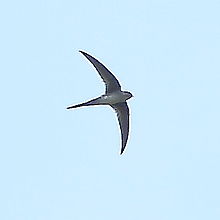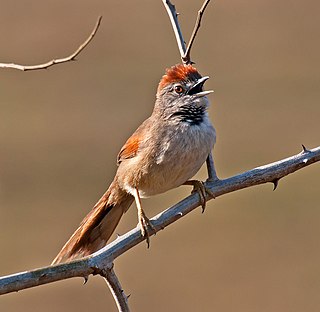
The pale-breasted spinetail is a passerine bird in the Furnariinae subfamily of the ovenbird family Furnariidae. It is found in Costa Rica, Panama, Trinidad, and in every mainland South American country except Chile and Ecuador.
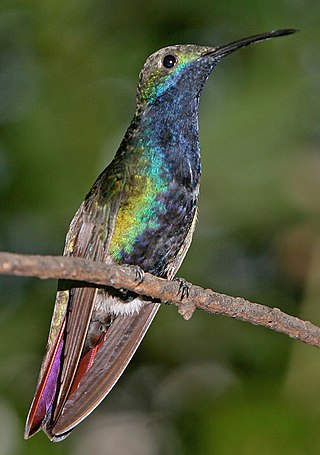
The black-throated mango is a species in subfamily Polytminae of the hummingbird family Trochilidae. It is found in Panama, in every mainland South American country except Chile, and in Trinidad and Tobago.

The grey-rumped swift or gray-rumped swift is a species of bird in subfamily Apodinae of the swift family Apodidae. It is found in Honduras, Nicaragua, Costa Rica, and Panama; in every mainland South American country except Chile, French Guiana, Suriname, and Uruguay; in Trinidad and Tobago; and on Grenada.
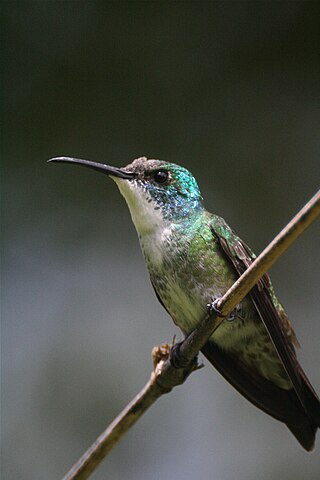
The white-chested emerald is a hummingbird in the "emeralds", tribe Trochilini of subfamily Trochilinae. It is found in Brazil, the Guianas, Trinidad, and Venezuela.

The bronze-tailed plumeleteer is a species of hummingbird in the "emeralds", tribe Trochilini of subfamily Trochilinae. It is found in Colombia, Costa Rica, Ecuador, Nicaragua, and Panama.

The Antillean palm swift is a species of bird in subfamily Apodinae of the swift family Apodidae. It is found on the Caribbean islands of Cuba, Jamaica, and Hispaniola.

The snowy-bellied hummingbird, also known as snowy-breasted hummingbird, is a species of hummingbird in the "emeralds", tribe Trochilini of subfamily Trochilinae. It is found in mostly in Costa Rica and Panama with a few records in Colombia.

The shining-green hummingbird is a species of hummingbird in the "emeralds", tribe Trochilini of subfamily Trochilinae. It is found in Colombia and Venezuela.
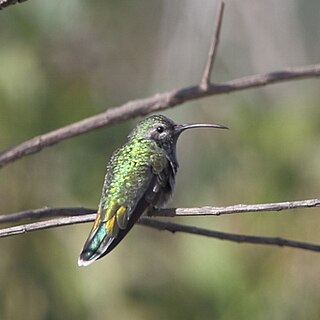
The white-tailed goldenthroat is a species of hummingbird in the subfamily Polytminae, the mangoes. It is found in Argentina, Bolivia, Brazil, Colombia, French Guiana, Guyana, Paraguay, Peru, Suriname, Trinidad and Tobago, and Venezuela.
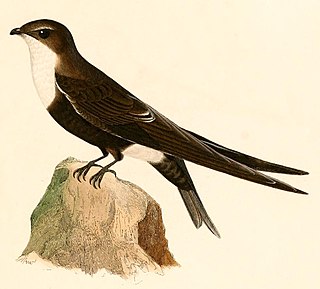
The white-tipped swift is a species of bird in subfamily Apodinae of the swift family Apodidae. It is found in Argentina, Bolivia, Brazil, Colombia, Ecuador, French Guiana, Peru, Suriname, Venezuela, and possibly Guyana.
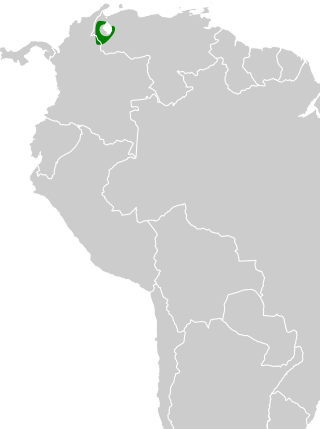
The pygmy palm swift, also known as the pygmy swift, is a species of bird in subfamily Apodinae of the swift family Apodidae. It is found in Colombia and Venezuela.

The ashy-faced owl is a species of bird in the barn-owl family Tytonidae. It is found on the Caribbean island of Hispaniola, on Dominica, and on several other islands of the Lesser Antilles.
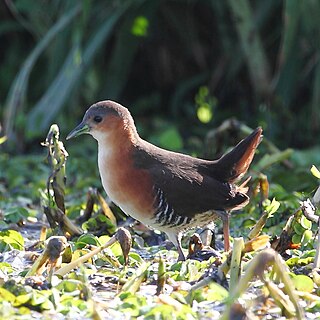
The rufous-sided crake is a species of bird in subfamily Rallinae of family Rallidae, the rails, gallinules, and coots. It is found in every mainland South American country except Chile.

The ash-throated crake is a species of bird in the subfamily Rallinae of the rail, crake, and coot family Rallidae. It is found in every mainland South American country except Chile.

The rusty-vented canastero, or creamy-breasted canastero, is a species of bird in the Furnariinae subfamily of the ovenbird family Furnariidae. It is found in Argentina and Bolivia.

The streak-backed canastero is a species of bird in the Furnariinae subfamily of the ovenbird family Furnariidae. It is found in Argentina, Bolivia, Colombia, Ecuador, Peru, and Venezuela.

The grey-throated leaftosser is a Near Threatened species of bird in the subfamily Sclerurinae, the leaftossers and miners, of the ovenbird family Furnariidae. It is found in Bolivia, Brazil, Colombia, Costa Rica, Ecuador, Panama, Peru, Trinidad and Tobago, and Venezuela.

The rufous-capped antshrike is a species of bird in subfamily Thamnophilinae of family Thamnophilidae, the "typical antbirds". It is found in Argentina, Bolivia, Brazil, Paraguay, Peru, and Uruguay.

The lettered aracari or lettered araçari is a near-passerine bird in the toucan family Ramphastidae. It is found in Bolivia, Brazil, Colombia, Ecuador, and Peru.

The pale-tailed canastero, is a species of bird in the Furnariinae subfamily of the ovenbird family Furnariidae. It is endemic to Peru.

